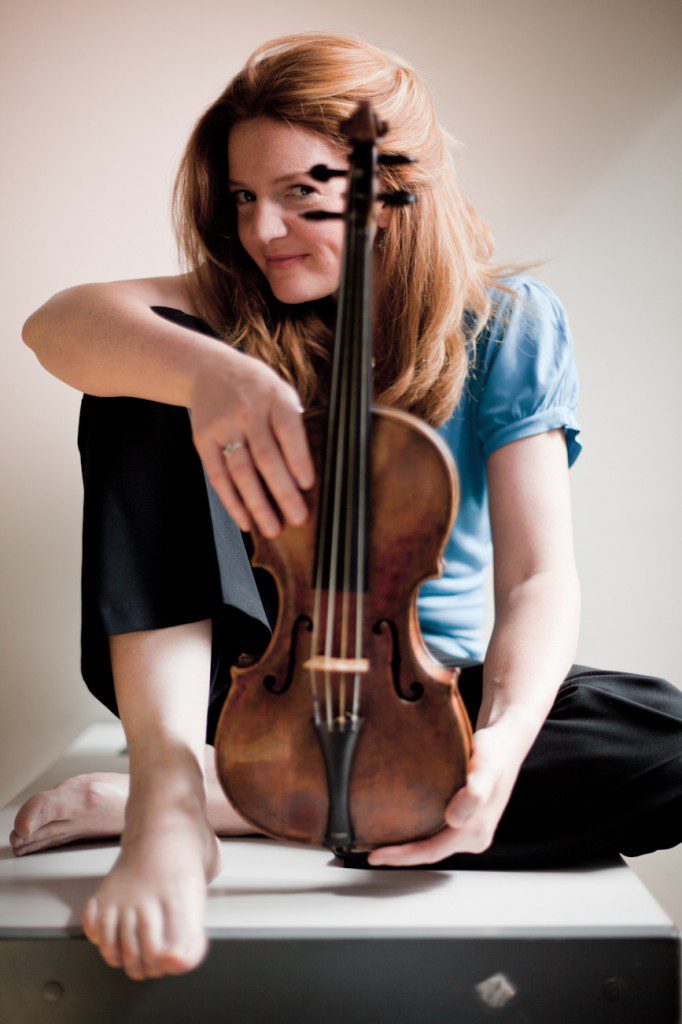Baroque playing needs fixing with Podger, Juilliard415

Rachel Podger performed with Juilliard415 Sunday at Corpus Christi Church for Music Before 1800. Photo: Jonas Sacks
Music Before 1800 forges on, opening its forty-second season on Sunday. The organization has earned its place in New York’s musical community, inviting leading baroque performance ensembles to Corpus Christi Church in Morningside Heights.
With Rachel Podger, a celebrity baroque violinist if there ever was one, leading Juilliard415, an accomplished historical performance ensemble, in a program of early Italian concerti, a strong concert should have been in the cards.
What stood out, though, was a surprising lack of polish–messy articulation, sour intonation, and roughness of sound marred their playing throughout the early-evening concert. A little allowance can be made for the wind players, using period instruments that are famously temperamental; when the strings fail to play in tune, it’s more difficult to excuse.
At their best, Podger and Juilliard415 brought a buoyant energy to their playing, rattling off crisp, rippling scales and achieving a generous, bright sound. The program’s first item, Veracini’s Overture No. 6 in G Minor, beamed as the players created a rich texture and vibrant sound.
Vivaldi’s Violin Concerto in D Major (RV 234) began well, bursting out of the gate with a bounding, thrilling spirit, followed by breathing lines and delicate pulse in the Largo. Playing the solo part, Podger’s intonation was already a little suspect in the slow movement, and in the last movement she began to lose her fingering, muddling her passagework and forcing her to play with much more caution than the ensemble accompanying her.
In fact, in almost all of Sunday’s selections the ensemble played with skill and grace, while the soloists, no matter who they were, seemed suddenly less secure, as though made nervous by the spotlight.
Vivaldi’s Concerto in D Major for two violins and two cellos (RV 564a) showed more luminous sparkle in the ensemble, bouncing nicely in the closing Allegro, while the soloists sounded unsure. We could hear the airy lightness of Corelli’s style in the opening bars of Concerto grosso No. 7, yet the violinists taking the solo parts skittered through them uneasily, fumbling difficult passages and struggling to agree on pitch. Giuseppe Valentini’s Concerto in A Minor for four violins (Op. 7, No. 11) was dogged by ensemble concerns and more sour intonation.
One of the strong points of Sunday’s program was its showcasing of the enormous variety that existed in the nascent concerto form. In addition to the four concerti for various configurations of strings, two vivaldi pieces featured woodwind soloists. Jonathan Slade and Mi Li Chang played with perfect stylistic grace in the Concerto for two flutes (RV 533), luxuriating in the warmer tone of the period instruments.
If the audience needed a microcosm for the intonation problems that had plagued the ensemble all evening, Podger and company’s single encore served the turn. Performing the Largo from Vivaldi’s Concerto Op. 4 No. 12, the violinists split the solo part, each taking a different variation, and each seeming to play at his or her own unique concert pitch. We are living in an extraordinary moment for early music, and Music Before 1800 has been a key part of bringing that renaissance to New York; right now, there is no reason we shouldn’t expect the same level of polish from historical performance ensembles as we do of the musicians performing the standard classical and romantic repertoire.
The next presentation of Music Before 1800 will be “Breathtaking: A Voice and a Cornetto Intertwined” 4 p.m. November 13 at Corpus Christi Church. musicbefore1800.org